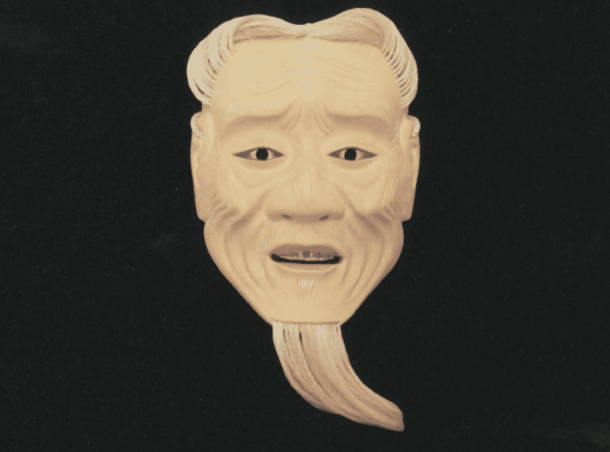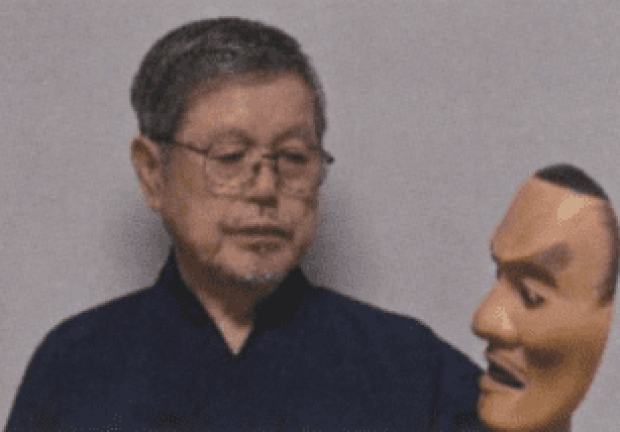Sister-State Relationship Between

The State of Florida and Wakayama Prefecture signed an agreement for a Sister-State relationship on October 4, 1995, with the commitment to strengthen friendship and understanding focusing on trade, the economy, social and cultural development.
The cultural exchanges between Wakayama and the State of Florida remain one of the most significant parts of the Sister State Agreement of 1995. Renowned artists from Wakayama have visited Florida to teach and demonstrate their craft, and Florida artists have been able to greatly benefit from these masters and also to travel to Japan for instruction in artists’ studios. This is a precious and valuable relationship. The Florida Department of State Division of Arts and Culture is honored to be a part of this long history.
Building on the goodwill established by the Florida -Wakayama Cultural Association and the Florida Division of Arts and Culture, Master mask maker, Mr. Hakuzan Kubo agreed to send a collection of rarely exhibited Noh Masks to Florida. To further the span of the exhibition, the University of West Florida, the Morikami Museum, the Gulf Coast Kiln Walk Society, a few private collectors and three Divisions of the Florida Department of State loan pieces to create the 29th Anniversary Florida-Wakayama Sister State Exhibition.
We welcome you to enjoy the beautiful works of art and we thank you for your support as we continue to promote relationships based on trust, friendship and respect and preserve these values for future generations.
Hakuzan Kubo
Hakuzan Kubo began his career as a teacher of Electrical Engineering at Wakayama Prefectural Engineering High School. Influenced by his grandfather, he became interested in Noh performances and studied the Kita Style of Noh song and dance under Noh Master Akira Matsui.
Under the tutelage of lkkan Settsu, he began carving masks and later became President of the Noh Mask Cultural Association. He is currently a member of the Association for the Photograph of Noh and an instructor of Noh Mask making at North-Mido Cultural Center and at the Yao-city Yamamoto Community Center.

NOH MASKS
Noh masks are carved from a single piece of Japanese cypress (hinok1) using traditional chisels and templates and finished with the crushed shell powder (gofun), animal glue
(nikawa), and mineral pigments (iwa-enogu), the same materials used in traditional Japanese painting (nihonga).
A good mask is a medium for projecting emotion to an audience over a considerable physical distance. The proper modeling of the back of the mask facilitates the projection of the voice. Ultimately, a Noh mask’s true beauty and character are realized when an actor wearing it on stage successfully unites intention, chant, and movement. The full-face masks worn by actors can appear to express different emotions depending on how the actor tilts their head, allowing skilled performers to convey a range of expressions with a single mask simply by changing their head orientation.
The word Noh means talent, skill and craft in art performance. Noh is the oldest theater style played today.
Noh is classical Japanese musical drama based on tales from traditional literature performed since the 14th century. Traditionally Noh actors begin their training at the age of three.
POTTERY
Masayochi Shimizu is a Master Ceramics Artist from lwade City, Wakayama Japan. He studied under ceramic Master Artist Mr. Kaoru Tachibana for over 25 years. In 2006, UWF’s Japan Center, invited him to exhibit his work, and then in 2013 several Gulf Coast Kiln Walk Society members visited his studio, completing the cultural exchange. Most of Shimizu’s pots are made from Shigaraki clay, a coveted variety indigenous to central Japan.
Pottery is one of Japan’s oldest cultural traditions, stretching back to at least the Jomon period (c. 13,000-300 BCE). Mr. Shimizu continues to create pottery using the same ancient techniques and an anagama (a Japanese term meaning “cave kiln”) wood fired kiln.
Florida Pottery Artist Jason Stokes learned firsthand from Master Artist Masayochi Shimizu. Using the same type of anagama kiln, he uses his pottery to depict life on the Emerald Coast of Florida and the Gulf of Mexico. Each hand made piece is unique and reflects the natural beauty of local sea life. Gulf Coast Kiln Walk Society has the largest anagama kiln in Florida.
Also known as kuroe-nuri, it is produced around the Kuro-e region northwest of the city of Kainan, Wakayama prefecture. with gold and given other further decorative treatments.
Koji Kusumoto was born in 194 7 in Wakayama. He became a professional photographer in 1984 and continued capturing the beauty of nature in Wakayama. In particular, the Keya & Kumano sites profoundly reflect the spirituality of the heart of the Japanese
Beautifully decorated balls originating in the 7th century. They are highly valued and cherished gifts, symbolizing deep friendship and loyalty.
Gargoyle-like creatures that stand watch and protect people from evil spirits. A cross between a dog and a lion, these fanged beasts are actually considered friendly and comforting. They are always present in pairs: the female shisa is close-mouthed to keep in the good spirits, while the male shisa is open-mouthed to scare away evil spirits.
On special loan from the University of West Florida, was commissioned for the Art in State Buildings Program in 2004.
The Florida Department of State Art Collection embodies Florida’s artistic diversity and educates the public about Florida’s cultural environment. Along with many other Florida artists, Romero Britto, Manena, and Helen Burkett have generously donated their artwork to the collection and are featured in this exhibit.
In the early 1950’s through the 1980’s a group of twenty-six African American artists known as the “Florida Highwaymen” used vivid and bright colors to display the beautiful untouched Florida landscape.
(1916-2015) was a freelance photographer when he arrived at Silver Springs in 1938. Mozert was the official photographer of Silver Springs, where he would remain for more than 40 years. Using the springs as his backdrop, Mozert designed underwater camera housings and lighting that allowed him to capture both the natural landscape and cleverly posed people and props.
A resident of Tampa, John pursues an interest capturing in visual form the rich and diverse bird life and other subjects of his home state. He creates life size images of birds that explore nuances indigenous to that species.
These objects from the State’s Archaeological Collections highlight some of the surprising trade connections throughout Florida’s 14,000 years of human history.
